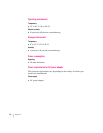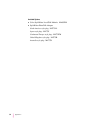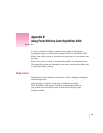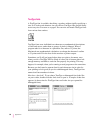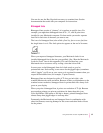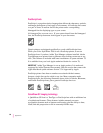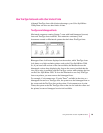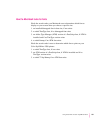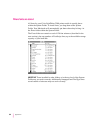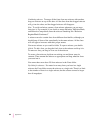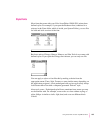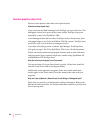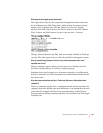
100
Appendix B
Using only TrueType fonts produces a closer match between the appearance
of type on the screen and on paper. However, a document you’ve already
created with bitmapped fonts will be reformatted with the corresponding
Tr ueType fonts, and line breaks in the document may change. Similarly, if a
document is created on a system that has TrueType fonts or Adobe Type
Manager software installed, it may have different spacing, kerning, and so on,
when opened on a system that doesn’t have TrueType fonts or Adobe Type
Manager software.
Keeping two font versions available
If you have a TrueType version of a font, you don’t need a bitmapped version.
However, although keeping both versions of a font takes up more disk space,
there are several advantages to doing so.
Bitmapped fonts are hand-designed: a graphic artist planned each character
in each font to look good on a screen. TrueType fonts are scaled by the
computer to match what you request. At smaller point sizes, the bitmaps may
appear sharper.
Additionally, scaling fonts takes time—sometimes up to several seconds in
slower Macintosh computers—but all Macintosh computers can display a
bitmapped font instantly.
Tr u e Ty pe and PostScript fonts
PostScript fonts were designed as fonts for PostScript printers. The Color
StyleWriter 2500 wasn’t designed to use PostScript. However, if you have
Adobe Type Manager software installed, your computer can both display and
print PostScript fonts.
Use different names: To avoid confusing the printer software, be sure that you
don’t install both TrueType and PostScript versions of the same font. For
example, do not have a PostScript font file called Times and a TrueType font
file called Times installed in your system at the same time.



